FUNDING CUTS IMPACT CT HUMANITIES: Help CT Humanities navigate recent funding cuts and continue our vital work across Connecticut. All donations made to CTH will be matched dollar-for-dollar up to $50,000. Donate today!
News & Updates

Sylvester Graham: Progressive Advocate for Healthy Living
Sylvester Graham is known as much for his sermons on morality as his advocacy of a healthy lifestyle and his creation of the graham cracker.
Read
Monument to Hero of the Greenwich Police Department – Who Knew?
A memorial in Byram Park honors Yogi, who became the first police dog of the Greenwich Police Department in 1988.
Read
Connecticut Yankee Brings Power to the People
For nearly 30 years the Connecticut Yankee Atomic Power Company operated a nuclear power plant in Haddam Neck, Connecticut.
Read
A Willington Visionary Preserves the Nation’s Colonial Past
Jared Sparks was a Unitarian minister, editor, and historian who went on to serve as President of Harvard University in the middle of the 19th century.
Read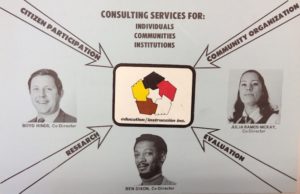
Education/Instrucción Combats Housing Discrimination
This group’s bilingual name reflected its educational mission as well as its dedication to unified, multicultural cooperation for the common good.
Read
Lobsters and Oysters and Clams: A Short History of Seafood in Connecticut
The ocean’s bounty has been savored along the Connecticut coastline for as long as humans have been around to bring it on shore.
Read
Boone Guyton Tested the Limits of World-Famous Aircraft
A long-time resident of Woodbridge, Boone Guyton was one of the most prolific test pilots in US aviation history.
Read
Connecticut Pin Makers
For the latter half of the 19th century and for much of the 20th century, Connecticut led the nation in pin production.
Read
Saddles Fit For a Shah
Since 1794, Hartford-based Smith-Worthington Saddlery has made tack for horses—along with the occasional ostrich harness and space suit prototype.
Read
The Hurricane of 1938 Rocks Connecticut
Together the combination of chance and human error produced the most destructive hurricane in Connecticut’s history.
Read
P. T. Barnum’s Lottery
Known for entertainment, this showman gained experience in engaging the public, and profiting from it, by running a lottery in Bethel.
Read
Elastic Web Expands Textile Manufacturing in West Haven
For the better part of a century, West Haven produced one of the more unique and innovative textile products in United States’ history.
Read
Map – Connecticut Landmarks of the Constitution
A map of some of the Connecticut Landmarks of the Constitution researched and published by the Connecticut Trust for Historic Preservation.
Read
Hurricane Gloria: “Storm of the Century”
In September of 1985, Hurricane Gloria made landfall in Connecticut, causing approximately $60 million of damage in the state.
Read
Literacy Tests and the Right To Vote
Connecticut was the first state to require a literacy test of would-be voters and, even as the practice came under fire as a tool of discrimination, the state held steady until 1970.
Read
Birthplace of the Gerber Baby – Who Knew?
Westport’s artist Dorothy Hope Smith used her neighbor, Ann Turner, as inspiration for her iconic Gerber Baby trademark drawing.
Read
Helen James Chisholm: A Hartford Teacher in Hawaii
Originally from Hartford, Helen James Chisholm’s career took her all the way to the Pacific to teach and run an orphanage.
Read
Financing a Free Puerto Rico: The Great Wells Fargo Heist of 1983
On September 12, 1983, an employee at the Wells Fargo depot in West Hartford, Connecticut, committed what was, at the time, the largest cash robbery in American history.
Read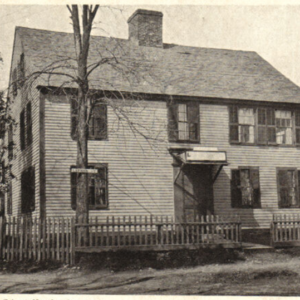
The Ebenezer Avery House – Who Knew?
The Ebenezer Avery House in Groton once served as a hospital for the wounded after the Revolutionary War’s Battle of Groton Heights on September 6, 1781.
Read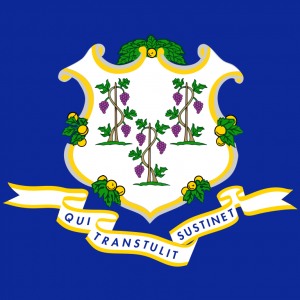
Connecticut’s Official State Flag – Who Knew?
While Connecticut used variations of flags for state functions, the legislature did not adopt an official state flag until 1897.
Read
Bradley Field Enters the Jet Age
In 1952 a state-of-the-art terminal building, Murphy Terminal, was opened in the spirit of “if you build it, they will come.”
Read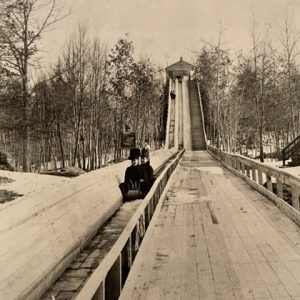
Trumbull’s Parlor Rock Park: A Premier Amusement Center of the Late 19th Century
In Trumbull, the arrival of the Housatonic Railroad brought a lesser known but more entertaining development—one of the country’s first amusement parks.
Read
Benedict Arnold Turns and Burns New London
September 6, 1781 was a brutal and terrifying day for Connecticut citizens living on both sides of New London harbor, along the Thames River.
Read
Morton Biskind Warned the World About DDT
A Westport physician named Morton Biskind became one of the first to warn the world about the dangers of DDT. His work ultimately helped inspire the writings of Rachel Carson.
Read
Early Turnpikes Provided Solution to Lack of Reliable Roads
Although few of the privately managed toll-roads of the 1800s proved profitable for investors, state commerce benefited in the long run.
Read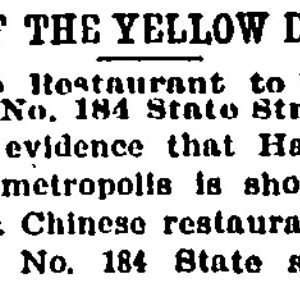
At the Sign of the Yellow Dragon: Hartford’s First Chinese Restaurants
The first Chinese restaurant opened in Hartford in 1898 and evolved as immigrants from different parts of China introduced new tastes.
Read
Peter’s Rock: North Haven History with a View
Far from being a mere recreational hotspot, however, Peter’s Rock is a formation with an extensive history of service to the surrounding area.
Read
Grounds for Divorce – Who Knew?
While Connecticut was not the first to grant a divorce, it was the first to define the grounds for dissolution of a marriage in An Act Relating to Bills of Divorce.
Read
Rewriting the Norm: How Two East Haddam Women Revolutionized Nonsexist Language
East Haddam’s Casey Miller and Kate Swift were both outspoken advocates for eradicating gender bias in the English language.
Read
Murder on the Map: The Mysterious Death of Captain George M. Colvocoresses
At first glance, this hand-drawn map appears unremarkable but it depicts the scene of a sensational crime in Bridgeport.
Read
Connecticut’s First Mutual Savings Bank Opens in Hartford
On June 1, 1819, Governor Oliver Wolcott Jr. approved a legislative charter for the Society for Savings in Hartford—the first mutual savings bank in the state.
Read
Discovered Dinosaur Tracks Re-Route Highway and Lead to State Park
Some 200 million years ago, carnivorous dinosaurs roamed Rocky Hill leaving the three-toed tracks that would become our state fossil.
Read
The Connecticut Houses that Ended Up in Massachusetts
Old Sturbridge Village moved numerous historical CT buildings, but evidence of their existence still lives on in historic maps, photographs, and memories.
Read
Elisha Root Changes Industry – Who Knew?
Elisha Root standardized production and made the Colt revolver the first handgun in the world with fully interchangeable parts.
Read
Briggs Manufacturing Drives Voluntown’s 19th-Century Cotton Economy
The Briggs Manufacturing Company was the premier employer in Voluntown, Connecticut, throughout the latter half of the 19th century.
Read
A Busy Airfield in Bethany
In its first few years, the airfield in Bethany served the interests of small-time aviation enthusiasts.
Read
19th Amendment: The Fight Over Woman Suffrage in Connecticut
In Connecticut, Frances Ellen Burr and Isabella Beecher Hooker took up the cause by forming the Connecticut Woman Suffrage Association (CWSA) in 1869.
Read
Enfield’s Shaker Legacy
Shaking Quakers settled in Enfield and created the packaged seed business.
Read
Lee’s Academy: An Icon of Education for 200 Years
For over two hundred years, Lee’s Academy has been a staple of education in Madison, Connecticut.
Read
Putting History on the Map
While maps serve a utilitarian function at the time of their production, they become snapshots in time of the memories of those who designed them.
Read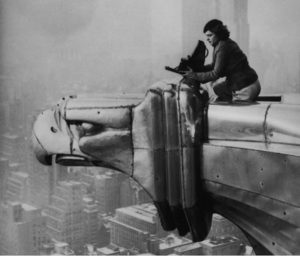
A Metal Giant in Wilton
Kenneth Lynch was an accomplished blacksmith who was a longtime resident of Wilton and created memorable pieces of metalwork found in the Northeast.
Read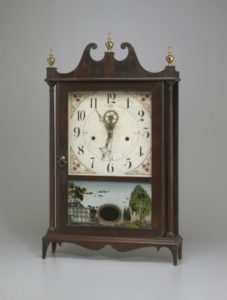
The Life of Chauncey Jerome: An Insider’s Look at What Made Early Bristol Tick
A glimpse at clock making in Connecticut from Chauncey Jerome’s 1860 autobiography
Read
Moses Wheeler: Legendary Housatonic Ferryman
Moses Wheeler carried passengers across the Housatonic River as the operator of the first ferry from Stratford to Milford—over 350 years ago.
Read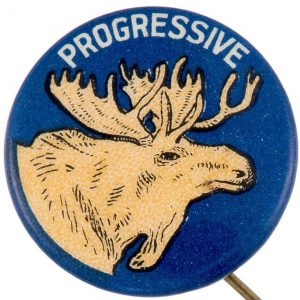
The Bull Moose Party in Connecticut
Connecticut expressed a brief interest in Theodore Roosevelt’s third-party, the “Bull Moose Party,” but the loss of the 1912 election proved career-ending for many candidates.
Read
Florence Griswold’s Home: A Story of Perseverance and Community
The Florence Griswold House, once a private residence, also served as a finishing school for girls in the 19th century and the center of the Lyme Art Colony.
Read
Fame and Infamy for the Hulls of Derby
Two Connecticut men, uncle and nephew, had starring roles—one in defeat and one in victory—during the War of 1812.
Read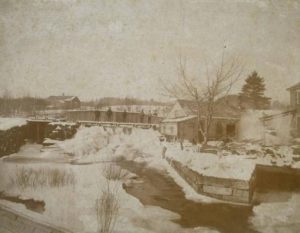
Ashford’s Glass from the Past
In 1857, 13 stockholders invested $18,000 to form the Westford Glass Company—Ashford’s largest and most famous business enterprise.
Read
Alain and May White Memorial Boulder
Words of thanks on a stone marker in Litchfield highlight contributions of a brother and sister to land preservation.
Read
Guilford’s One-Man Fire Department
In the early decades of the 20th century, the town of Guilford had a fire department stationed on Chaffinch Island that consisted of just one man, Francis Ingals.
Read
Lake Compounce: Bringing Amusements to the State’s Residents Since 1846
Bristol’s Lake Compounce is the oldest continually operating amusement park in the US and has been open every summer since 1846.
ReadMore Articles




